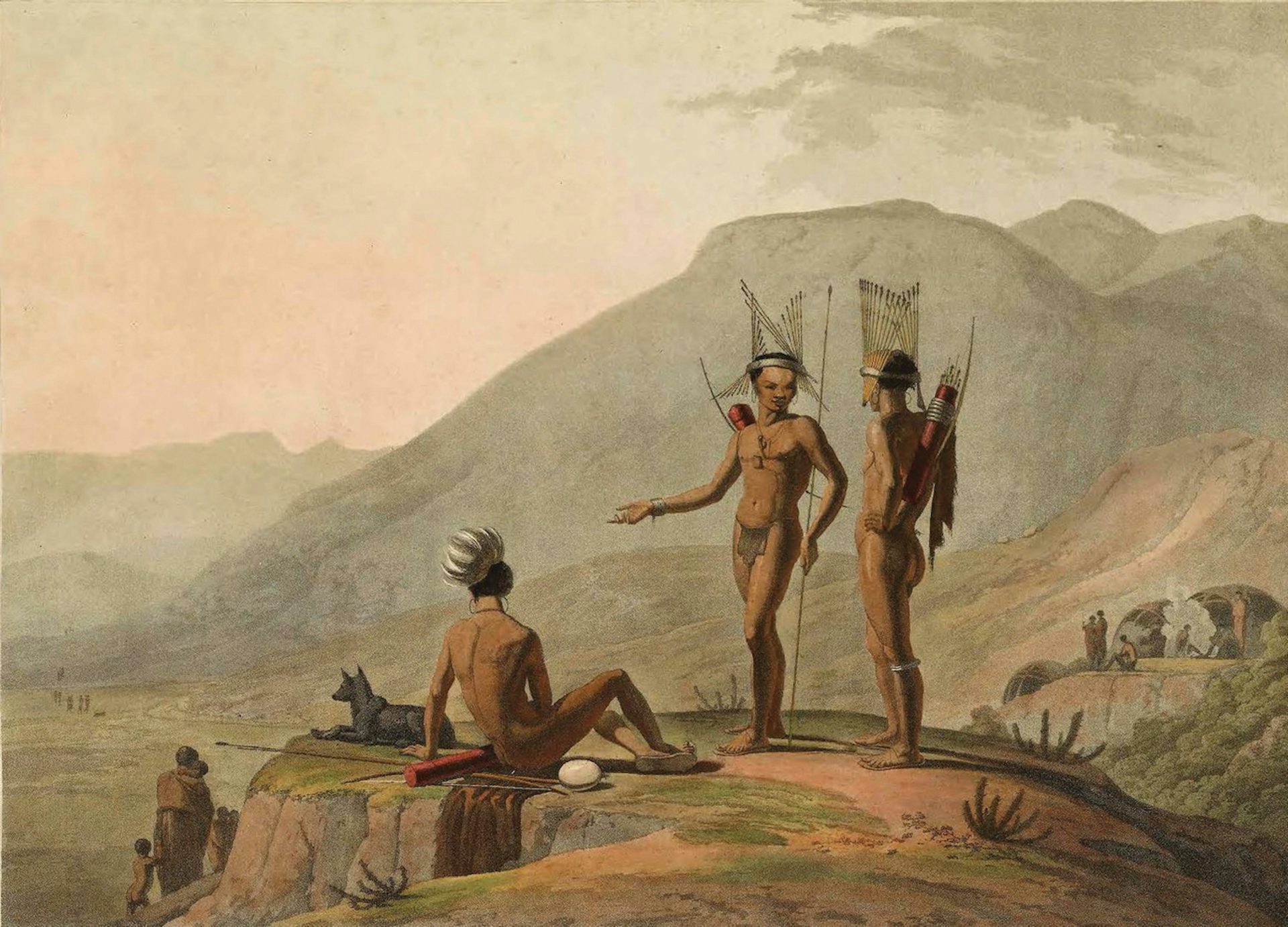Heitsi-Eibib

'Lifestyle of the Bushmen' from "African People at Work", uploaded by Andy Maano, (2017).
Wikimedia CommonsCC BY-SA 4.0Overview
The identity of Heitsi-Eibib (also known as Heise, Haiseb, or Haitse-aibe) varies across Khoekhoe mythology: he was either a demi-god or a mortal who was deified after death.[1] In either case, he lived as a rich and powerful chief, known for his skill as a hunter, seer, and trickster.[2] He died and was reborn many times before ultimately being deified as the god of hunting.
According to legend, Heitsi-Eibib began life as a patch of grass. After a cow ate that grass, he was born from the cow in the shape of a bull.[3] Heitsi-Eibib then wandered through the wilderness, where he knew the names of all the animals. His wife was a gemsbok (a type of antelope); together they had two children, who were born half-human and half-antelope.[4]
Pronunciation
English
Khoekhoe
Heitsi-Eibib Heitsi-Eibib Phonetic
IPA
[hey-TSEE-ey-BIB] /heɪ.tʃi: eɪ.bɪb/
Heitsi-Eibib Defeats Ga-Gorib

Bushmen armed for an expedition from 'African Scenery and Animals', by Samuell Daniel (1804).
Wikimedia CommonsPublic DomainOne of Heitsi-Eibib’s best-known myths involves his defeat of the monster Ga-Gorib. This monster used to sit on the edge of a deep pit and challenge anyone who passed by to try and throw a stone at his forehead. But each time a passerby obliged him, the rock bounced off of Ga-Gorib’s head and killed the thrower. Their body would then fall into the pit.
One day, Ga-Gorib challenged Heitsi-Eibib to attack him. Heitsi-Eibib agreed, but before he threw the stone, he drew Ga-Gorib’s attention to one side. As the monster turned his head, Heitsi-Eibib struck him behind his ear and killed him. Ga-Gorib then fell into his own pit.[5]
An alternate version of the story states that Ga-Gorib chased Heitsi-Eibib around the pit until the hero fell in. But Heitsi-Eibib managed to escape, and the battle continued until the hero had pushed Ga-Gorib into the pit.[6]